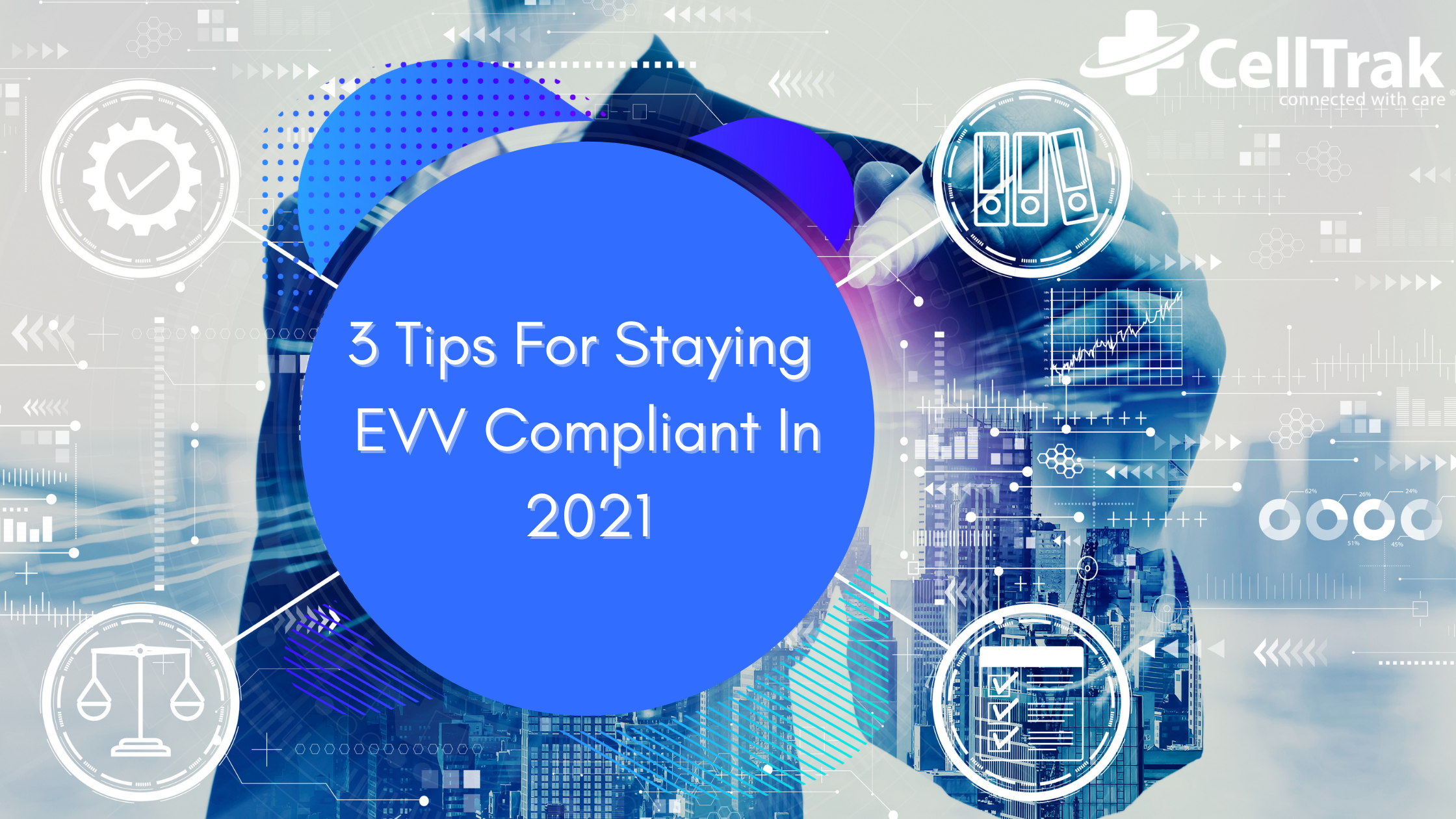3 Tips For Staying EVV Compliant In 2021
Electronic Visit Verification continues to be top of mind for many providers as states move forward with implementation. Personal care services are affected now. Home health services are already part of the current EVV mandates in approximately 35% of states, and imminent in the remaining states with deadlines as soon as mid-2022. In some cases, providers such as behavioral health, hospice, or foster care agencies are affected by EVV regulations because they deliver mandated services. As you work towards implementation against your state deadlines, here are three tips to help you proactively manage compliance:
Monitor Changes in Requirements:
States are continually adapting EVV implementation policies, deadlines, and requirements based on provider feedback and the lessons learned during the first phases of technology rollout. In the last 30 days, several states have announced the onboarding of new aggregators, accompanied by a short compliance deadline. For example, Missouri and California recently selected Sandata, and Minnesota chose HHAeXchange – and all are targeting implementation by the end of 2021. Both Massachusetts and Delaware have paused efforts with their current vendor in favor of choosing a new aggregator partner. Alabama is in the process of transitioning from a closed to an open EVV model, phasing out their current vendor First Data and implementing HHAeXchange at the start of the new year.
Prepare for Pre-Payment Review:
Overall, we have seen a shift in focus from getting EVV in place to beginning to monitor compliance at a more detailed level. About 20% of states have new monitoring requirements going into effect prior to the end of 2021, so be sure you understand the criteria in your state. There are several ways that we have seen states monitor providers. Some states use compliance thresh holds which increase over time, requiring providers to have a certain percentage of visits electronically verified. Other states choose to monitor compliance by regularly conducting audits. Still others match EVV data claim-by-claim prior to payment. Many states have set milestones to measure providers against, progressively increasing oversight prior to putting stricter pre-payment review in place.
Streamline Workflow:
Evolving EVV requirements among states and MCOs means that providers should periodically review their operational workflows- both to ensure compliance and to optimize the benefits of EVV. We encourage agencies to take advantage of the grace period- or soft launch- to train caregivers and streamline their process. In addition, think about backup EVV options to manage exceptions where visit data wasn’t captured or needs to be corrected.
All of these changes require providers to be agile and well-versed in EVV regulations, and so we hope that our three tips support you along your journey towards compliance. If you have questions about the implementation requirements in your state, please reach out to CellTrak for the latest guidance.

